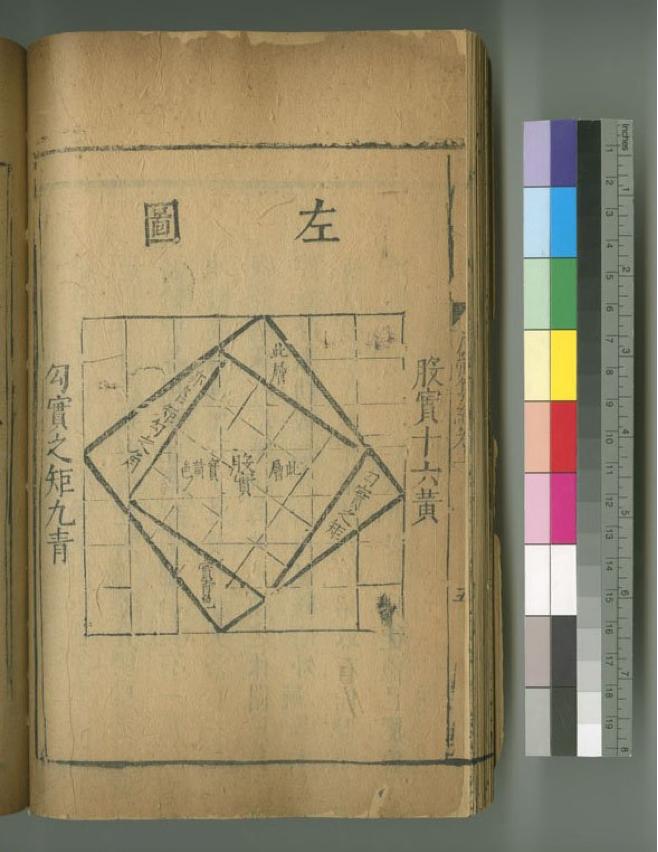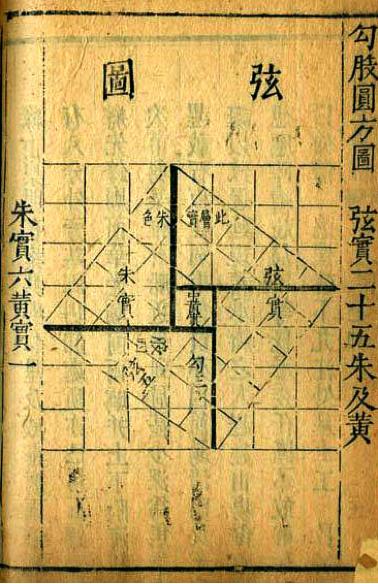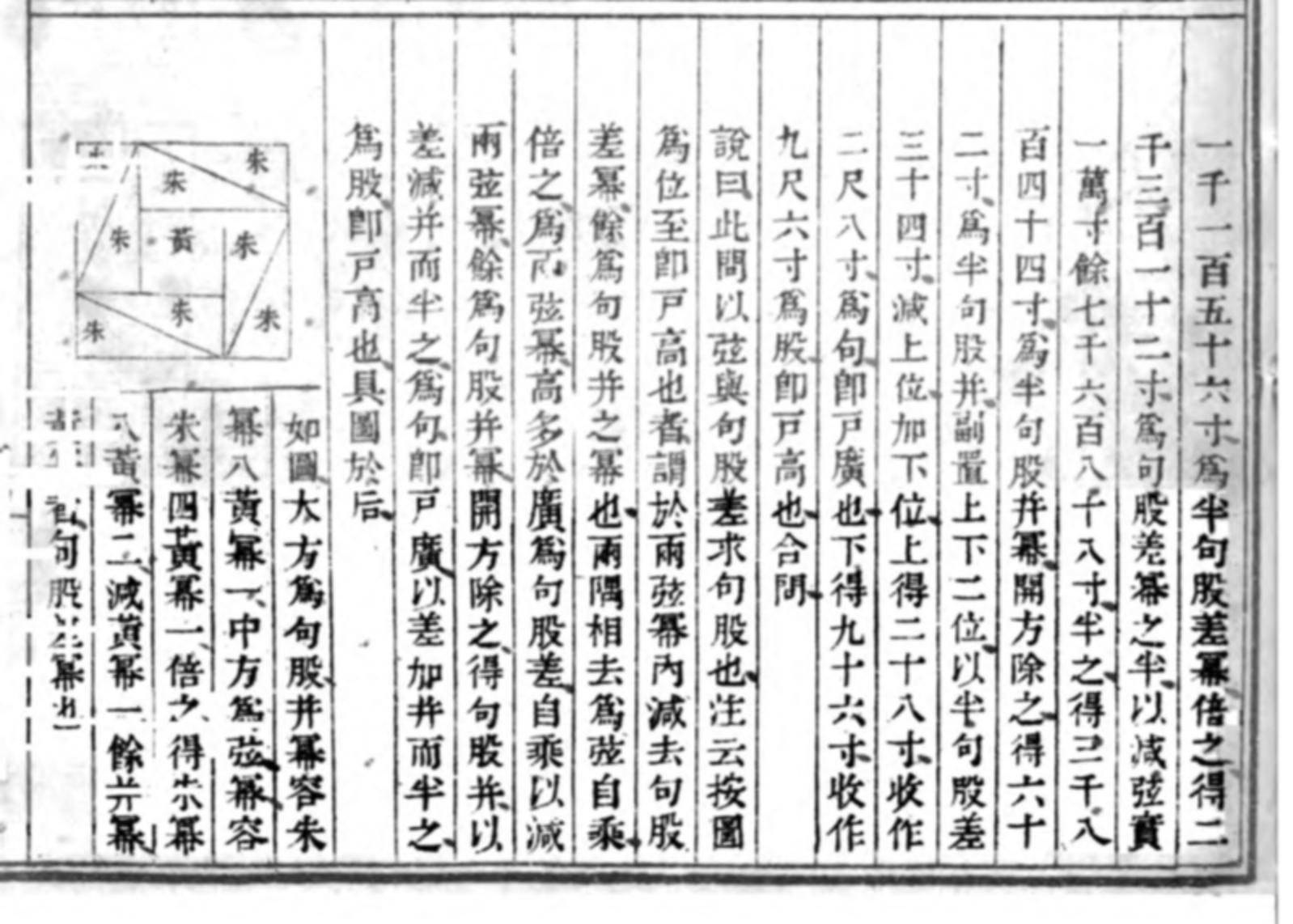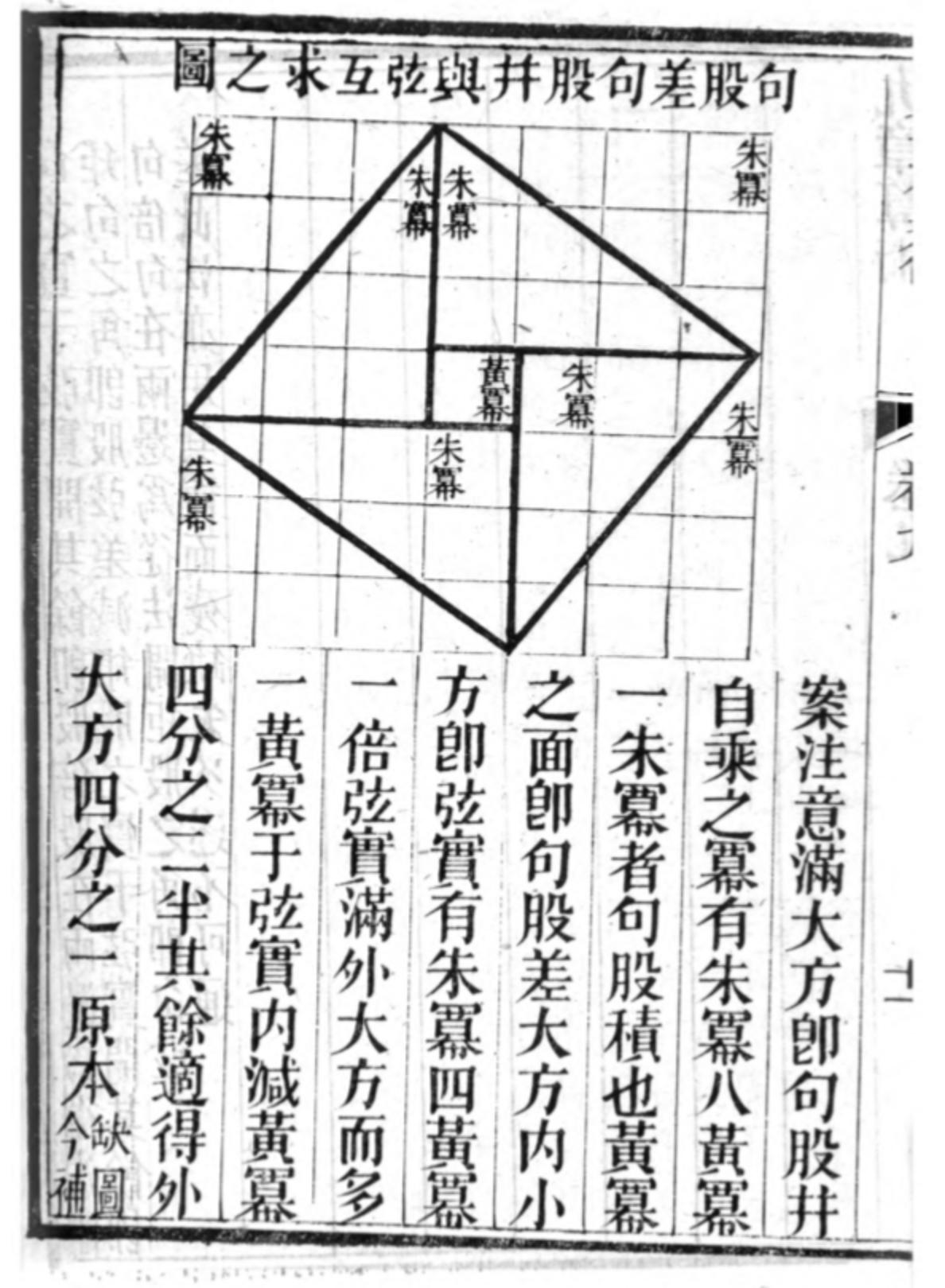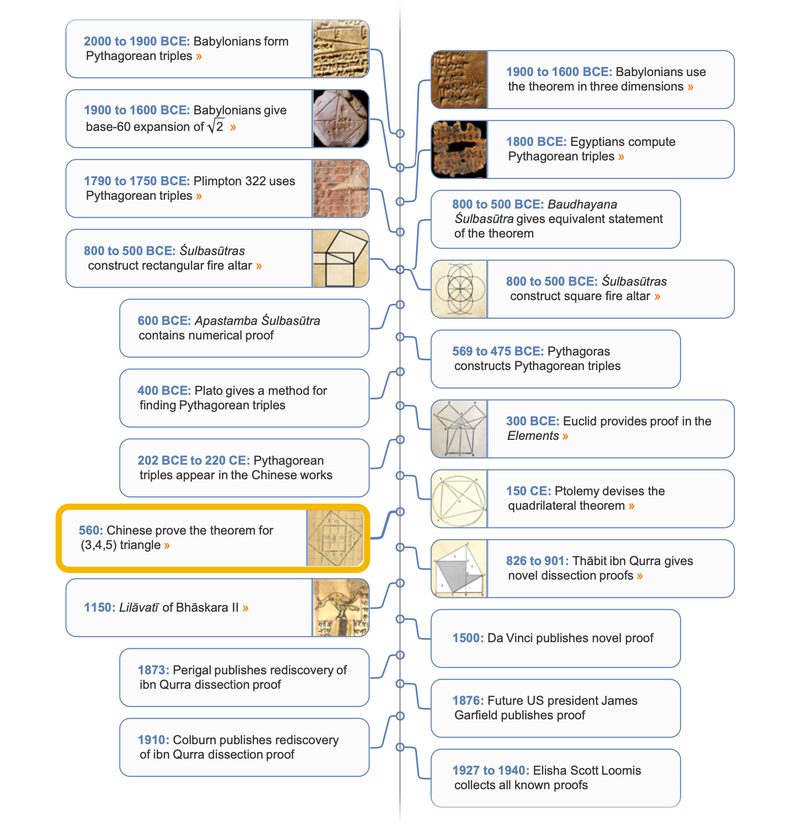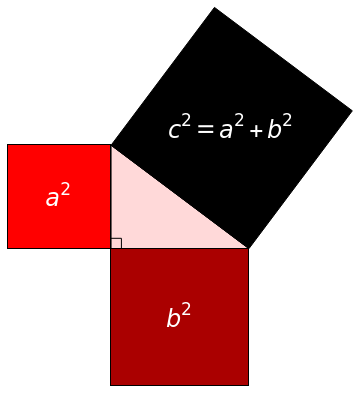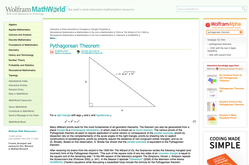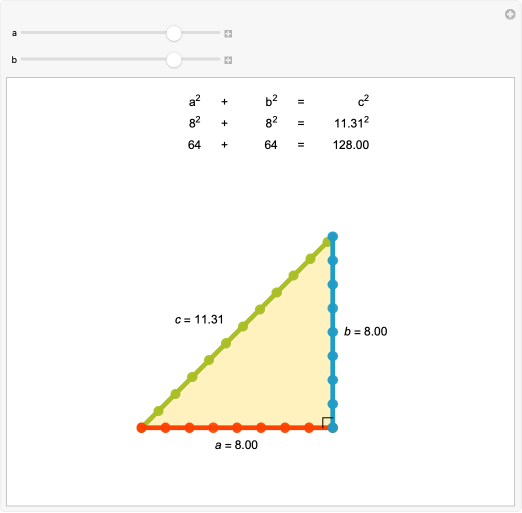around 560 CE
Zhoubi Suanjing Pythagorean Theorem Proof
One of the first recorded proofs of the Pythagorean theorem
The Chinese text Zhoubi Suanjing gives reasoning for proving the Pythagorean theorem for a (3, 4, 5)-triangle. The original work is attributed to the period of the Zhou Dynasty (1046–256 BCE). Compilation and addition of materials continued into the Han Dynasty (202 BCE–220 CE), and the oldest surviving copy dates from roughly 100 BCE. The pages highlighted here originate from a Ming-Dynasty copy of the work printed in 1603.

The figure used to prove the Pythagorean theorem in Zhoubi Suanjing is usually referred to as the "hypotenuse diagram," or xian tu. It is ascribed to Zhen Luan (535–566), a Chinese mathematician and astronomer who mentions the diagram while discussing Zhao Shuang's third-century commentary of Zhoubi Suanjing. The xian tu provides an elegant dissection proof of the Pythagorean theorem, which is known in Chinese as the gou-gu theorem.
